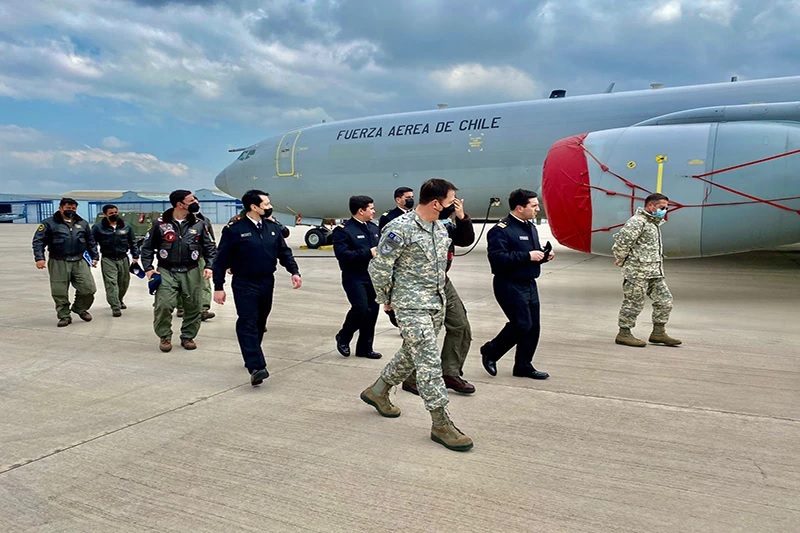The Chilean Air Force (FACh) received a delegation from the Chilean Navy who learned about the capabilities of the Boeing E-3D Sentry AEW.Mk1 early warning and airborne control aircraft of Aviation Group No. 10.
According to the FACh, the delegation visited on September 7 the Pudahuel air base of the II Air Brigade to learn about the aircraft’s capabilities.
This instance allowed the specialists of both institutions to exchange experiences and enhance their knowledge of early warning and airborne control (AEW&C) and air-sea exploration operations.

The personnel from the Naval Operations Command, the National Squadron, and the Naval Aviation were led by the commander-in-chief of the latter operational force, Rear Admiral César Delgado.
He was received by the commander-in-chief of the II Air Brigade, Air Brigadier General Andrés Leiva, and by the commander of Aviation Group No. 10, Group Commander Rodrigo Grunert.
The professional visit included a detailed explanatory presentation by the Sentry’s crew on the capabilities of the aircraft, as well as an exchange of experiences between the teams of specialists of the No. 10 Aviation Group and the VP-1 Aeromaritime Exploration Squadron of the Naval Aviation, thus contributing to the joint work between the two units.
Rear Admiral Delgado thanked and highlighted the instance that will allow coordinating joint air operations between the Navy and the Air Force, enhancing surveillance and Air Search and Rescue (SAR) capabilities.
The recent incorporation of this weapon system has enabled the Chilean Air Force to recover early warning and airborne control capabilities, thus contributing to the control and security of the national airspace.
It should also be noted that this technology can be used in the different air operations carried out by the Air Force, optimizing the use of combat air assets.
It also allows for expanding the control of the airspace, which, in the case of Chile, is one of the most extensive in the world, requiring aircraft with systems and flight autonomy that allow them to move and remain operating in distant territories such as Rapa Nui and Antarctica.
In the same way, the capabilities provided by this weapon system can be used in situations where it is required to maintain control where air operations are developed with institutional, joint, or combined means in times of peace, as is the case of the intervention of the Armed Forces and their air means during catastrophes caused by nature and generated by man, and the mitigation of their effects.
Likewise, they can be used to control aircraft during forest fires when there is no possibility of coordinating them from the ground. Similarly, they can actively participate in long-range SAR operations.
With information from InfoDefensa

